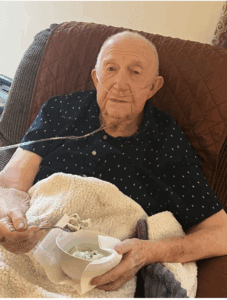I’ve written several pieces inspired by my friend Jason Fair on this blog. You can check out Merry Christmas, Jason, published just two weeks after his death by suicide in 2019. As Jason fuels so much of my passion for advocacy, I also penned An Open Letter to Therapists on Affirming Your LGBTQ+ Clients in 2020, which features his image and some of his story.
Jason’s death impacted me like no other. We were bright eyed college kids fresh into the world, both coming from conservative religions, when we met in 1997. The last five years of his life we bonded over our shared journeys in recovery, especially connecting over the impact of spiritual abuse and growing up as queer kids in high demand Christianity.
In writing You Lied to Me About God: A Memoir, I composed and recorded a collection of music to go along with this most personal book that I’ve written to date. I wrote the song A Lullaby for Jason on my guitar a few weeks after he died. However, in creating the recording of You Lied to Me About God, I knew that the final product had to be on the piano. Jason was a long-time pianist and organist in both sacred and theatrical performance contexts. I adored listening to him play the piano and felt even more privileged when I had the chance to sing with him. Thanks to the talents of my high school friend Christine Dorbish Fader, who provided the piano arrangement and performance, we have A Lullaby for Jason as a gift to him and to the world.
In the spirit of expressive arts therapy, where all the creative forms can connect intermodally and multimodally, it only felt natural to create a short film (you can call it a music video if you like) to honor Jason’s memory and to raise awareness. Take care of yourselves when watching it as it does have a content alert for suicide, addiction, and trauma. Thank you to Jason’s mother Deb for her blessing on using the video clip of Jason that anchors the video.
If you are within the United States and are in a mental health emergency, please dial 988.
If you are a survivor of suicide loss in need of support resources, please go to www.lightafterlossstark.org
And if you are an LGBTQ+ individual who is currently struggling with mental health concerns, please visit www.thetrevorproject.org














